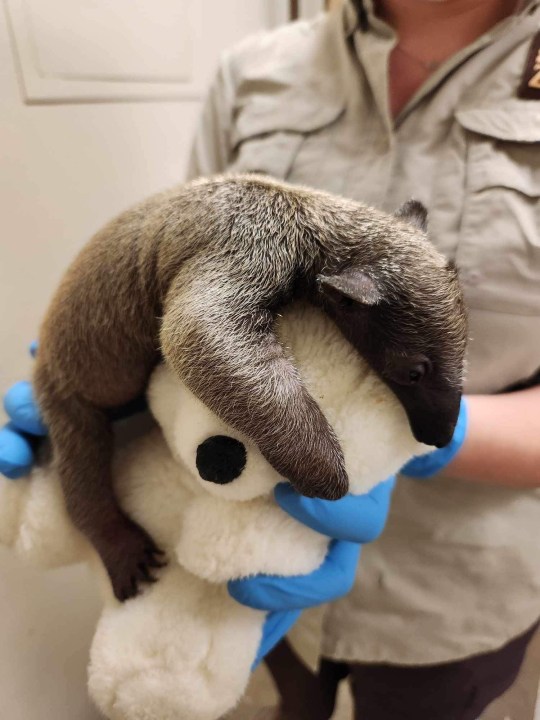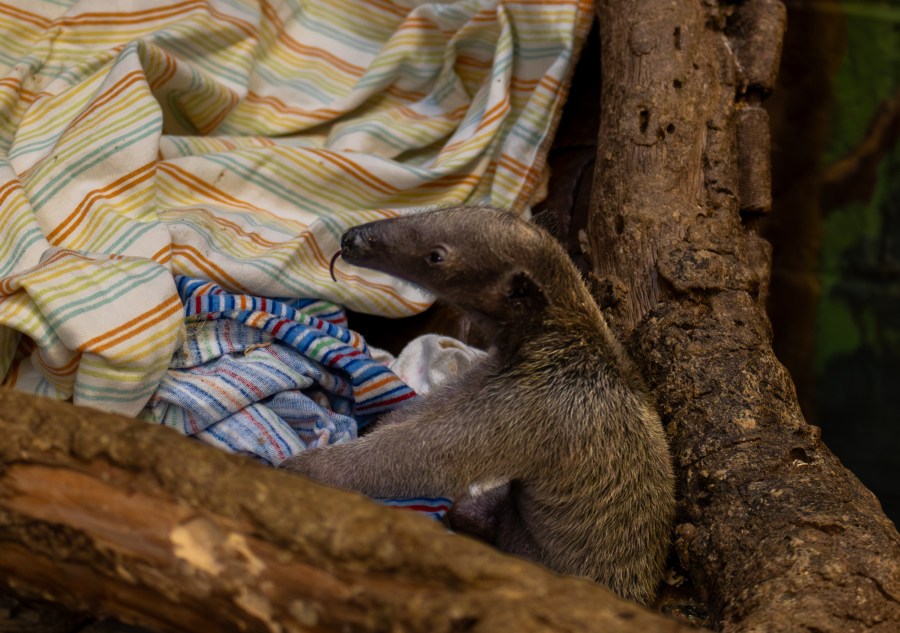
The first southern tamandua, or lesser anteater, successfully bred at the Los Angeles Zoo was born last month, officials announced Wednesday.
The unnamed pup was born on Aug. 28 to 8-year-old Lou and 6-year-old Micah. The baby’s gender will be determined later through bloodwork, zoo officials explained.
“The pup is the first for both parents and a milestone for the L.A. Zoo,” they said in a news release.
“This is the first time L.A. Zoo visitors will have the opportunity to see the species as a neonate and observe its development over time. We are thrilled with this new addition to our zoo family and its arrival is a testament to the care and wellbeing provided by our entire team,” Mallory Peebles, senior animal keeper at the zoo, said.
Southern tamanduas are found in forests, shrublands and savannas of Colombia, Venezuela, French Guiana, Guyana, Suriname, Uruguay and Argentina, officials said. They use sharp claws and prehensile tails to climb trees and hold onto branches in search of ants, termites, bees and honey. They dig small holes in ant or termite nests and lick up the insects as they exit. Southern tamandua don’t have teeth, instead they have 16-inch-long tongues, which are covered with tiny rear-facing spines coated with thick saliva, zoo officials described.
Micah’s gestation lasted 164 days, and the zoo’s Animal Care team closely monitored her health, behaviors and the development of the fetus during her pregnancy. Keepers successfully trained her to voluntarily position her body to allow veterinarians to perform ultrasound exams.
“Micah and the pup have been bonding and settling nicely into their habitat. Micah has been an attentive and caring new mother, often observed cuddling with her pup in their nest or touring the exhibit with her pup on her back,” zoo officials said.
While southern tamanduas are classified as a species of Least Concern by the International Union for Conservation of Nature, habitat loss caused by human activities in South America are a threat to their survival. Wildfires, deforestation, road construction and traffic also pose challenges for the species.
Zoo guests can now view the newborn pup and its parents at the nursery located next to the Winnick Family Children’s Zoo.















